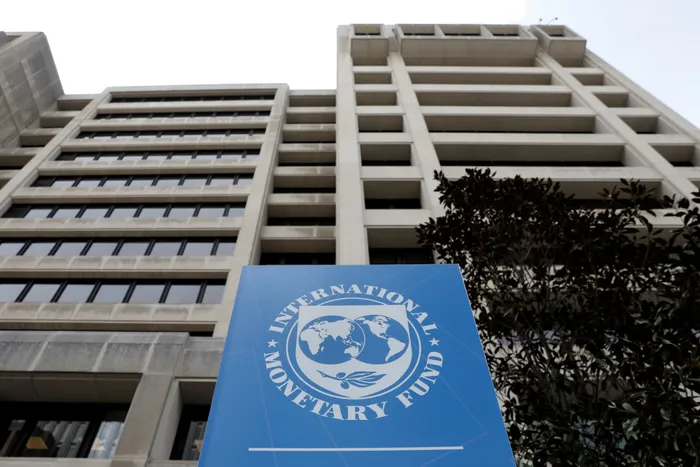Emerging markets weather global shocks on stronger policy frameworks and luck – IMF
GLOBAL ECONOMY

The IMF attributes this resilience primarily to improved monetary, fiscal, and macroprudential frameworks, which have allowed central banks to act more independently, stabilize domestic economies, and reduce reliance on foreign exchange interventions.
Image: Yuri Gripas / Reuters / File
Emerging markets have shown remarkable resilience in the face of global financial volatility, thanks to a combination of “good policies” and, to a lesser extent, “good luck,” according to the International Monetary Fund’s (IMF) latest World Economic Outlook (WEO) released on Monday.
The report's chapter 2, titled “Emerging Market Resilience: Good Luck or Good Policies?”, finds that many emerging economies are now better equipped to withstand global “risk-off” shocks — periods when investors retreat from riskier assets — than they were before the 2008 global financial crisis.
The IMF attributes this resilience primarily to improved monetary, fiscal, and macroprudential frameworks, which have allowed central banks to act more independently, stabilize domestic economies, and reduce reliance on foreign exchange interventions.
Andrea Presbitero, deputy division chief of the IMF Research Department’s Multilateral Surveillance Division, said in a media briefing that the implementation and credibility of monetary policy have gradually improved over time.
Presbitero said central banks in emerging markets have increasingly focused on output stabilization rather than exchange rate management, reflecting better-anchored inflation expectations.
“When we look at the risk of episodes before and after the global financial crisis, the data show that growth was about one percentage point higher after the GFC than before,” Presbitero said.
“Half of that improvement is due to stronger policy frameworks — the other half, to good luck.”
According to the WEO, improved policy frameworks have helped emerging markets achieve 0.5 percentage point higher growth and 0.6 percentage point lower inflation during recent episodes of global financial stress compared with the pre-crisis period.
“Inflation was 0.6 percentage points lower, entirely thanks to better policies,” Presbitero added, underscoring the importance of institutional reforms and monetary discipline implemented in the post-crisis years.
The report also finds that emerging markets have also made progress in fiscal discipline, with governments becoming more responsive to debt sustainability pressures. However, high-debt countries still face elevated borrowing costs, particularly during global downturns.
“Fiscal strength has paid off, but risks remain,” Presbitero said, pointing to deteriorating external conditions, shrinking fiscal space, and political pressures that could test resilience once again.
Central banks are now less prone to fiscal dominance — situations where monetary policy is constrained by government financing needs — and are demonstrating greater autonomy from U.S. monetary policy.
A key shift highlighted by the IMF is the reduction in foreign exchange interventions. In countries with credible monetary policies and stronger financial regulation, central banks have allowed their currencies to adjust more freely to market conditions.
“Countries with strong policy frameworks are less likely to intervene in foreign exchange markets during periods of volatility,” read the report, adding that such nations experience smaller output losses and lower inflation spikes when shocks occur.
While the overall picture is positive, the IMF cautions that progress has been uneven across regions. Economies with weaker institutions and high debt levels remain vulnerable to sudden capital outflows and inflation surges.
The Fund urges these countries to avoid delaying monetary tightening when inflationary pressures emerge, warning that hesitation can lead to “larger output losses and greater inflation persistence.”
The IMF emphasised that continued reform is essential to sustain resilience in an increasingly uncertain global environment. Safeguarding central bank independence, rebuilding fiscal space, and maintaining macroprudential vigilance are seen as key priorities.
“Emerging markets with strong frameworks benefit from easier policy trade-offs and face a lower risk and severity of capital flow reversals,” the Fund said. “But external conditions can deteriorate rapidly — complacency would be costly.”
Meanwhile, the IMF's chapter 3 of the Global Financial Stability (GFS) report on “Global Shocks, Local Markets” showed that emerging and frontier markets are increasingly turning to local currency borrowing to strengthen financial resilience — but the trend also brings new risks, including the potential for crowding out private credit and creating vulnerabilities in domestic banking systems.
The findings of the GFS cover 12 large emerging markets, eight smaller ones, and about 20 frontier economies.
The study shows that over the past decade, emerging markets have steadily migrated toward issuing debt in local currencies, reducing reliance on foreign-currency borrowing that previously left them exposed to exchange rate shocks.
“In major emerging markets, the share of local currency bonds has risen from 79% to 88% over the last 10 years,” said Jason Wu, assistant director for global markets analysis, monetary and capital markets department at the IMF.
“In frontier economies, the increase has been even sharper — from roughly 70% to over 85%.”
BUSINESS REPORT